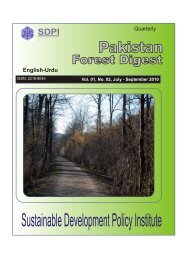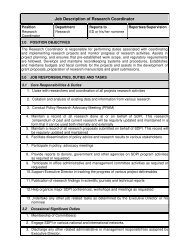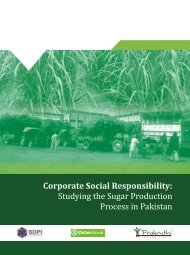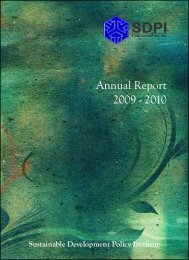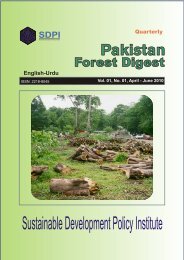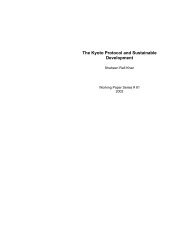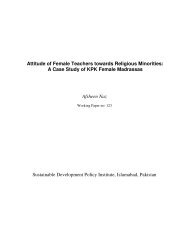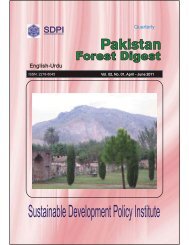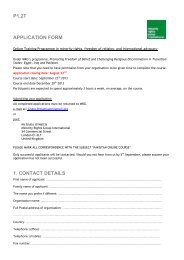Past, Present and Future 1Muhammad Asif Wazir Policy Brief # 35
Past, Present and Future 1Muhammad Asif Wazir Policy Brief # 35
Past, Present and Future 1Muhammad Asif Wazir Policy Brief # 35
Create successful ePaper yourself
Turn your PDF publications into a flip-book with our unique Google optimized e-Paper software.
education has a significant effect on fertility. Women having higher education have a fewerchildren as compared to women with less education <strong>and</strong> so is the case of Pakistan. Women withtertiary education have already attained below replacement level fertility 2 .The mortality transition in Pakistan started in the 1950s. Several studies show that the country’smortality improved quite significantly during the first two decades following independence. Lifeexpectancy at birth for both sexes has improved over the last five decades from 41.2 years in1950-55 to 64.6 years in 2005-2010. It is interesting to note here that life expectancy at birth inPakistan has improved linearly during the last six decades for male <strong>and</strong> female alike. Forinstance, during the last two decades, life expectancy at birth increased by 2.4 years for female<strong>and</strong> 2.2 years for male in Pakistan. The country has enacted substantial progress in infantmortality in recent decades. Infant Mortality Rate (IMR) has declined significantly following theindependence from 177 in 1950-55 to 71 deaths per 1000 live births in 2005-10.Pakistan has witnessed a high fertility in the past <strong>and</strong> population growth is beginning to level offas part of the demographic transition. Hence, Pakistan will experience a demographic bonus —a period of time when the share of working age population is prominent. In the next 30 to 40years, a majority of its population will be of working age with fewer younger <strong>and</strong> still few agedcitizens. In 2010, <strong>35</strong> per cent population of Pakistan aged below 15 years <strong>and</strong> 60 per cent of thepopulation was in the working-age (15-64). This rising share of the working age population couldbe translated into subsequent rise in the rate of economic growth if country can employ themeffectively. In this context, human capital will be central to the realization of this window ofopportunity for rapid economic growth.The educational achievement <strong>and</strong> literacy in Pakistan has not been impressive in the past. In arecent study, Goujon <strong>and</strong> <strong>Wazir</strong> (2011) have clearly shown that, the Pakistani educationalsystem has failed to provide the basic infrastructure, eliminate gender imbalances <strong>and</strong> thequality of education, which would be required to enjoy the full collateral benefits of demographicbonus such as high levels of economic growth <strong>and</strong> well-being.<strong>Future</strong> Population of PakistanThe future population is projected by using multi-state population projection methodology. Theprojection model is based on the base year population with defined educational categories <strong>and</strong>differentials of each demographic component of change i.e. fertility, mortality <strong>and</strong> migration. Theprojection results show that the population of Pakistan will be growing significantly in the nextfive decades i.e. from 174 million in 2010 to 281 million in 2060 though Pakistan will manage toachieve replacement level fertility by 20<strong>35</strong>-40. The substantial population growth in the future isdue to “population momentum” 3 . It may be mentioned that approximately half of the population2 Replacement level fertility is the level of fertility at which a population exactly replaces itself from onegeneration to the next. In numerical term, replacement level fertility assumes 2.1 children per women.3 Population momentum typically referred as, for countries that have undergone the middle phase of thedemographic transition, the population is growing significantly even though the fertility has fallen to orbelow the replacement level.2


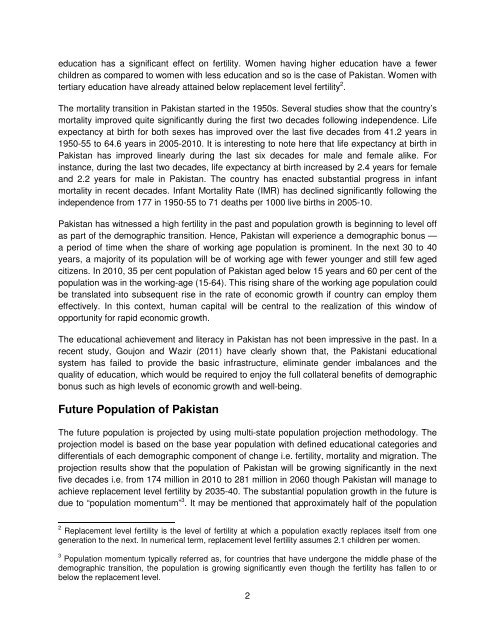
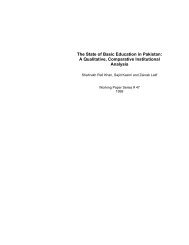
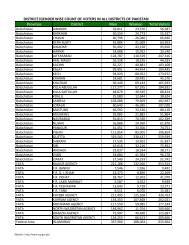
![(October - December, 2010) [13th SDC Special Bulletin]](https://img.yumpu.com/50118608/1/184x260/october-december-2010-13th-sdc-special-bulletin.jpg?quality=85)
